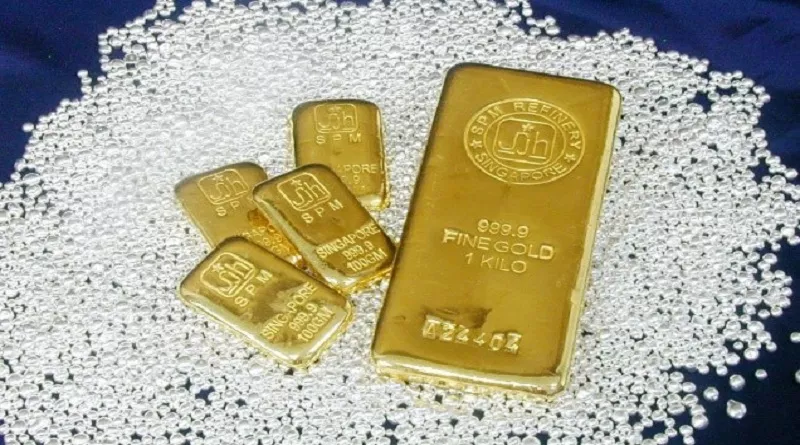Gold has long been regarded as a symbol of wealth, stability, and security. Throughout history, it has withstood the test of time and maintained its allure as a safe-haven investment. However, in the ever-changing landscape of global markets, it is crucial to analyze the factors that drive the price of gold and determine whether its value will continue to increase. In this article, we will delve into the key elements that influence the price of gold and evaluate the prospects of this precious metal in the foreseeable future.
Historical Performance
Gold’s appeal as a valuable asset can be traced back thousands of years. It has been used as a medium of exchange, a store of value, and a hedge against inflation and economic uncertainties. Over the past decades, gold has exhibited significant price fluctuations, reacting to various economic, political, and social events. Despite short-term volatility, gold has proven to be a reliable long-term investment, consistently preserving its value over time.
Factors Driving Gold’s Value
-
Inflation and Economic Uncertainty:
Gold has historically acted as a hedge against inflation. When the value of fiat currencies declines due to inflationary pressures, gold tends to rise in value, as investors seek a more stable store of wealth. Economic uncertainty, geopolitical tensions, and financial crises also drive investors towards gold, as it is perceived as a safe haven during turbulent times.
-
Central Bank Policies:
The policies of central banks, particularly related to interest rates and quantitative easing (QE), have a significant impact on the price of gold. Lower interest rates and expansionary monetary policies tend to weaken currencies, making gold relatively more attractive. Additionally, central banks themselves have been consistent buyers of gold, further bolstering its demand and value.
-
Demand and Supply:
The demand and supply dynamics in the gold market play a crucial role in determining its value. Gold has a limited supply, and mining new reserves is becoming increasingly challenging and costly. On the demand side, gold is sought after by various sectors, including jewelry, technology, and investment. The growth of emerging economies and the rising middle class, particularly in India and China, have fueled the demand for gold.
Current Market Trends
In recent years, gold has experienced both highs and lows. From 2011 to 2019, the price of gold exhibited a steady upward trend, peaking in 2011 before undergoing a correction. Factors such as the global financial crisis, quantitative easing, and geopolitical tensions contributed to the surge in gold prices during this period. However, since 2019, gold has faced headwinds, with the price experiencing a decline.
The Impact of COVID-19
The COVID-19 pandemic had a profound effect on the global economy and financial markets. In the initial stages of the crisis, gold experienced a temporary decline, as investors sought liquidity amid widespread panic. However, as the magnitude of the pandemic became apparent, gold rebounded and reached new all-time highs in 2020. The unprecedented fiscal stimulus measures, low-interest-rate environment, and concerns over the long-term economic impact of the pandemic contributed to the surge in gold prices.
Future Outlook for Gold
The future outlook for gold depends on a variety of factors:
-
Inflationary Pressures:
Inflationary pressures are expected to play a crucial role in determining gold’s value. As governments and central banks continue to implement expansionary fiscal and monetary policies to combat the economic fallout of the pandemic, inflationary concerns may rise. This could create a favorable environment for gold as investors seek to preserve their purchasing power.
-
Central Bank Policies:
The trajectory of central bank policies, including interest rates and monetary stimulus, will impact the price of gold. If central banks maintain an accommodative stance, it could support the demand for gold as a hedge against currency devaluation.
-
Economic Recovery and Market Sentiment:
The pace of economic recovery, market sentiment, and risk appetite will influence the demand for gold. If global growth remains robust and investor confidence is high, there might be a shift away from gold to riskier assets. Conversely, if economic uncertainties persist, gold could regain its appeal as a safe-haven asset.
Conclusion
While short-term fluctuations are inherent in any investment, the long-term prospects of gold remain positive. Its historical performance as a safe-haven asset, coupled with factors such as inflationary pressures, central bank policies, and supply and demand dynamics, suggest that gold may continue to increase in value. As investors navigate an increasingly complex global economic landscape, including uncertainties surrounding the recovery from the pandemic, gold’s status as a reliable store of value is likely to persist.
However, it is important to note that predicting the future price of any asset, including gold, is inherently challenging. Investors should exercise caution and conduct thorough research before making investment decisions. Diversification, consulting with financial professionals, and staying informed about global economic trends are key to building a well-rounded investment portfolio.


